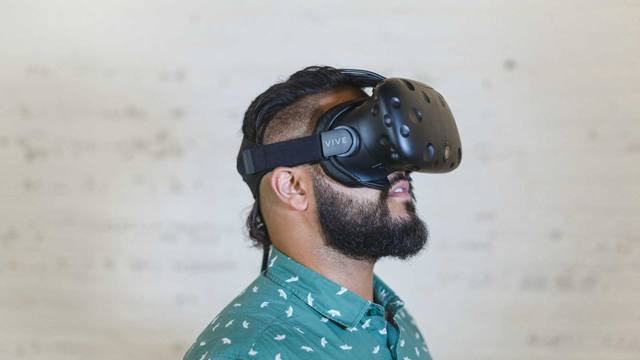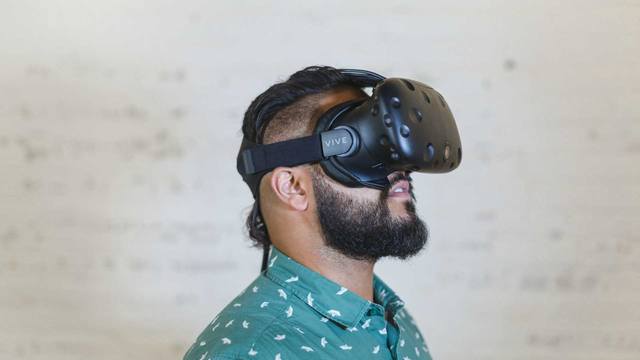
As great swaths of the economy switched to working from home almost overnight, video conferencing platforms and workplace messaging apps became vital to keeping workplaces connected and ensuring business continuity. But with business mindsets changing for the long term and widespread remote work here to stay, companies also need to look to the future and ensure that they have the best technology and resources for delivering remote learning, onboarding new recruits and upskilling existing employees.
Taking Remote Learning to the Next Level
Until recently, remote learning was largely restricted to resources like eLearning programs, webinars, digital knowledge bases, podcasts and videos. These methods all have a role to play, but they do not replicate an in-person training experience, and it can also be difficult for organizations to measure engagement or accurately track learner progress. For companies looking to take remote learning to the next level, virtual reality (VR) may be the way forward.
VR brings the training situation to the learner, immersing users in realistic, simulated training scenarios at any time and any place. This immersion enables employees to gain “hands-on” experience without the real-life risk of not doing something right first time.
Metrics for Success
One of the key challenges facing learning and development (L&D) leaders is how to evaluate learning in a way that’s reliable and objective. VR platforms have the potential to standardize the training process, producing detailed reports that enable organizations to evaluate the performance of individuals and the workforce as a whole.
VR technology enables training professionals to review every aspect of participants’ performance, from the amount of time it takes them to carry out a specific task to the way they communicate with colleagues. This data is collated in a dashboard, giving training professionals immediate insight into learners’ strengths and areas for development. This technology is constantly evolving and could soon capture data on eye movements, biometrics and even brainwave patterns.
This nuanced data not only enables organizations to develop a rich picture of employee development, but it also provides valuable feedback on both the efficiency of training programs themselves and the wider business procedures, measuring return on investment (ROI) and highlighting areas for improvement.
On-demand, Bespoke Training
Millennials and members of Generation Z — people born in 1984 and later — make up a growing portion of the global workforce. Having come of age in a digital world, with a wealth of information at their fingertips, this demographic of workers demands flexible, intuitive technology that prioritizes user experience (UX). To meet these needs, good VR training is agile, accessible and can be tailored to individual learners.
Using VR, organizations can deliver training in bite-sized chunks, at a time that suits the learner, avoiding the information overload that can come from an intense one-day in-person or online course. Learners can work at their own pace and focus on the areas they feel least confident in, gaining instant feedback. Advances in personalization, enabled by a growing data pool, also mean that organizations can customize training methods to achieve the best from their employees.
Using a VR headset or standard web browser, trainers can offer real-time guidance and assessment from any location. In the near future, trainers may also have the power to be in multiple places at once, having previously recorded themselves carrying out tasks for trainees to replicate; this ability will provide learners with a human experience — without scheduling issues.
Leveling up
Gamification features can bring an element of competition to VR training and make remote learning more social and collaborative. Learners can compete against their colleagues and their own high scores, using a virtual leaderboard to compare scores. This sense of competition and success increases engagement — and if learning is engaging and enjoyable, it tends to be more effective. Studies carried out by the University of Cambridge’s Cyber-Human Lab found that VR training methods result in 55% faster task completion as well as significantly higher quality of work and learning retention.
Broadening Virtual Horizons
In a rapidly changing world, reskilling and upskilling employees is essential for businesses to remain competitive. The huge shifts in the corporate landscape caused by COVID-19 have accelerated many trends, including a transition to large-scale remote working. In this remote world, L&D professionals will need to find ways to effectively train staff, no matter where they are. VR training meets this challenge head-on, delivering effective, engaging training that can also incorporate the social, collaborative and tactile elements of in-person learning.
Remote learning technologies can sometimes be passive and unengaging. VR training is the opposite, and it also delivers a wealth of data, helping training professionals track progress and improve training programs. VR can make remote learning an enhanced version of in-person training rather than a poor substitute for it. As businesses adjust to this new reality, enterprise VR platforms could be the key to keeping employees engaged, connected and productive.







